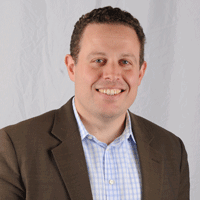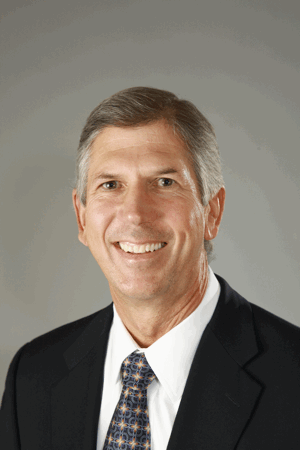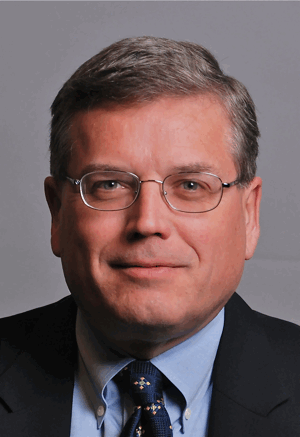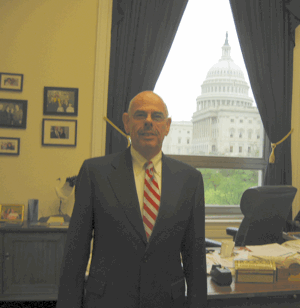Reforming Toxic Chemical Regulation
Air Date: Week of May 7, 2010

Living on Earth's Washington studio on Capitol Hill. (Photo: Bruce Gellerman)
There’s growing evidence linking industrial chemicals to chronic diseases and birth defects. Seventy-four billion pounds of chemicals are produced each day in the U.S. yet few of the ingredients have been evaluated for safety. Living on Earth’s Bruce Gellerman reports on attempts to overhaul how the nation regulates industrial chemicals.
Transcript
YOUNG: According to the Environmental Protection Agency, 74 billion pounds of chemicals are produced or imported into the United States each day. That's more than 240 pounds of chemicals—day in and day out—for every man, woman and child in the country. And that doesn't even include chemicals used in drugs, foods, fuels or pesticides.
The federal law that’s supposed to protect people and the environment from industrial chemicals is more than three decades old. And consumer and environmental groups, the EPA, even manufacturers agree—the current regulations governing industrial chemicals are long over due for reform. Living on Earth's senior correspondent Bruce Gellerman reports from Washington.
GELLERMAN: In the Living on Earth broadcast studio on Capitol Hill I'm surrounded by things made from chemicals. The walls and floor are carpeted, the ceiling is insulated tile, my desk is painted, I've got a plastic bottle, my pens and printer are filled with ink, there’s a pile of alkaline batteries. And just look around. Chances are you too are also surround by products made with industrial chemicals.

LOE's Washington Studio on Capitol Hill (Photo: Bruce Gellerman)
WALLS: Our products, our industry’s products touch 96 percent of all manufactured goods.
GELLERMAN: That's Michael Walls—Vice President of Technology and Regulatory Affairs with the American Chemistry Council. It’s a trade group representing the nation’s largest chemical manufacturers.
WALLS: You're talking about an industry that's vital for the national defense. It's vital to the health and safety of all Americans. You're talking about the solutions to some of our global problems like climate change, reducing CO2 emissions is fundamentally a chemistry problem.
GELLERMAN: There are over 82 thousand industrial chemicals registered for use in the United States and that number is increasing by about 700 new chemicals a year—that concerns health advocate Andy Ingrejas:
INGREJAS: It’s true that chemicals are used in almost everything. There’s lots of benefits from chemicals. But I think for most people that’s all the more reason why we should know what’s going on with them.

Andy Ingrejas is Campaign Director of Safer Chemicals Healthy Families (Photo: Safer Chemicals Healthy Families)
GELLERMAN: Ingrejas is campaign director of Safer Chemicals, Healthy Families. It’s a coalition of 200 organizations campaigning for changes in the federal law regulating industrial chemicals.
INGREJAS: Chemicals on the market right now are effectively unregulated. The federal government has not reviewed their safety and said this is okay, to be used in all these ways. They have not done that. It’s nothing like we do for drugs.
GELLERMAN: For drugs, manufacturers must prove to the Food and Drug Administration that their chemical compounds are safe.
But under the federal law known as TSCA—the Toxic Substances Control Act—industrial chemicals are automatically considered safe. It’s up to the government to prove they’re not. Senate Democrat Frank Lautenberg of New Jersey has proposed a bill that would radically overhaul TSCA. California Democrat Henry Waxman is leading the effort in the House.
WAXMAN: The Toxic Substances Control Act was adopted in 1976 and it has never been revised, but no one thinks it’s working, even the industry realizes the law needs to be revised.
DOOLEY: Clearly we’re committed to the safe use of our products.
GELLERMAN: Former Congressman Calvin Dooley is head of the American Chemistry Council.
DOOLEY: We think TSCA has been working very well, but we also recognize that after 30 years that there’s opportunities to even enhance it’s effectiveness and utilizing some of the new science and technology to even do a more accurate assessment and comprehensive assessment of the safety of chemicals.

Calvin Dooley is President and CEO of The ACC. (Photo: Calvin Dooley)
GELLERMAN: This represents a major shift in the Chemistry Council’s position—a reaction to growing public concern over environmental toxins. Previously, the Council advocated voluntary measures, but in recent months, congressional and EPA staffers, advocacy groups and industry representatives have been meeting to work out the many technical details for overhauling TSCA. Michael Walls of the Chemistry Council has participated in those sessions.
WALLS: I think that’s what’s remarkable about this issue is that at this stage in the discussion there is a consensus that maybe we can do something. But it’s in the details where the hard work still needs to be done.
GELLERMAN: The devil is in the definitions. Right now, in order for the government to regulate a chemical the EPA has to prove it poses—quote—“an ‘unnecessary risk’ to people or the environment.” Jane Houlihan, vice president for Research at the Environmental Working Group says that’s the first thing that needs to be changed.

Michael Walls is Vice President of The American Chemistry Council (Photo: American Chemistry Council)
HOULIHAN: Under the current system chemicals are innocent until proven guilty and the new proposals would flip that, there would be a burden of proof. Industry would need to provide proof to EPA that the chemicals are safe enough to use.
GELLERMAN: The new standard would require companies to demonstrate—quote—“a reasonable certainty of no harm.” That’s the same standard the federal government now uses to regulate pesticides. The American Chemistry Council agrees the burden of proof should be on manufactures, but president Cal Dooley cautions that adopting the “no harm” standard could hamper innovation.
DOOLEY: I think the question’s now is really in terms of, how do you define that standard? And I think that’s the public policy challenge that we face. What is that risk standard that we’re willing to accept?
GELLERMAN: And how is that standard set and met? Today, the United States is the only developed country in the world that does not require a chemical maker to submit safety data before production. But without the data, how can the EPA determine risk or harm? Again Jane Houlihan of The Environmental Working Group:
HOULIHAN: One thing we have in federal law now is a requirement for companies to submit studies—that they happen to do—there is no requirement to submit studies. If the company determines that that study indicates a significant risk to human health or the environment. Now that’s the company’s interpretation of whether that is a significant risk. If they say, “yeah we think it’s a significant risk” then they submit that study to the EPA. But it’s their discretion.
GELLERMAN: Right now, the EPA has just 90 days to review a new chemical before a company can start selling it. And in only 15 percent of those products does the manufacturer provide the agency with any health and safety studies.
HOULIHAN: It’s such a weak law that EPA has used it to get off the market or set restrictions for only five chemicals or chemical families in the history of the law. They’ve only required testing for about 200 chemicals or chemical mixtures. Now compare that to the 82 thousand chemicals that are registered for use in the U.S. and you see they can only tackle a tiny fraction of what’s on the market.
GELLERMAN: The last time the EPA tried to ban a chemical under TSCA was 1991. That was asbestos, a known carcinogen, responsible for nearly ten thousand deaths a year in the United States. Asbestos is still used in consumer products. That’s because according to federal law the EPA must use the least burdensome option, of all other possible actions, to reduce risk, so banning asbestos is simply not an option.
The proposed Safe Chemicals Act would require companies to provide basic health and safety data for each chemical they produce. It would also create a list of the most dangerous products on the market and give the EPA expanded powers to regulate them. Congressman Henry Waxman wants to go even further. He says manufacturers should have to show how exposure to chemicals affect people in real life.

Congressman Henry Waxman (Photo: Bruce Gellerman)
WAXMAN: I think the approach that we often take that we’re going to look at chemical-by-chemical leads us nowhere. We need to get it on a much faster time frame and look at not just one chemical but the impact of a number of different chemicals in combination.
GELLERMAN: Researchers say environmental exposure to chemicals may be responsible for up to 35 percent of asthma cases, ten percent of cancers, and 20 percent of neurological disorders. But which chemicals? What products? Under current law manufacturers can claim confidentiality; they can keep their ingredients secret. Congressman Henry Waxman:
WAXMAN: People who buy curtains or other products that have chemicals in them have no idea that they may be exposing themselves and their loved ones to something that could cause cancer or other disease. So there is no rationality to the regulation at the federal level to protect the public, to make sure that industry has the rules under which they must operate and to make particularly clear that we want to watch out for the interests of our children who are even more susceptible to toxic chemicals.
GELLERMAN: Proposed updates to the Toxic Substances Control Act would do just that. In the future chemical companies would have to consider the effects their products have on especially vulnerable populations including women, children, people of color and those living near chemical factories. After decades of failed attempts, Congress is now putting the overhaul of TSCA on the fast track. Congressman Waxman hopes the house will vote on it before Memorial Day, and Cal Dooley, the head of the American Chemistry Council is cautiously optimistic.
DOOLEY: You know when you look at the political environment today, you look at the complexity of this issue is that the stars would have to align to see action I think this year.
GELLERMAN: But many states and cities are not waiting for the stars to align. In the absence of federal action a growing number of local governments are moving to restrict. and in some cases ban chemicals the EPA now lacks the ability to effectively regulate. For Living on Earth. I’m Bruce Gellerman.
[MUSIC: John Ellis “Three Legged Tango In Jackson Square” from Dance Like There’s No Tomorrow (Hyena Records 2008)]
Living on Earth wants to hear from you!
Living on Earth
62 Calef Highway, Suite 212
Lee, NH 03861
Telephone: 617-287-4121
E-mail: comments@loe.org
Newsletter [Click here]
Donate to Living on Earth!
Living on Earth is an independent media program and relies entirely on contributions from listeners and institutions supporting public service. Please donate now to preserve an independent environmental voice.
NewsletterLiving on Earth offers a weekly delivery of the show's rundown to your mailbox. Sign up for our newsletter today!
 Sailors For The Sea: Be the change you want to sea.
Sailors For The Sea: Be the change you want to sea.
 The Grantham Foundation for the Protection of the Environment: Committed to protecting and improving the health of the global environment.
The Grantham Foundation for the Protection of the Environment: Committed to protecting and improving the health of the global environment.
 Contribute to Living on Earth and receive, as our gift to you, an archival print of one of Mark Seth Lender's extraordinary wildlife photographs. Follow the link to see Mark's current collection of photographs.
Contribute to Living on Earth and receive, as our gift to you, an archival print of one of Mark Seth Lender's extraordinary wildlife photographs. Follow the link to see Mark's current collection of photographs.
 Buy a signed copy of Mark Seth Lender's book Smeagull the Seagull & support Living on Earth
Buy a signed copy of Mark Seth Lender's book Smeagull the Seagull & support Living on Earth

